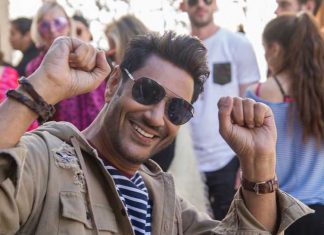With the biggest festival of India, the General Elections round the corner; it is almost hilarious to see that the political parties are leaving no stone unturned when it comes to campaigning and marketing their strategies. With their IT Cells working from dawn to dusk and ministers delivering pompous speeches on television, Indian political parties have now resorted to exploiting the indigenous art forms of the country. Since India’s majority voting bank is rural, political parties are trying their best to infiltrate these areas with native folk art forms apart from occupying social media platforms.
Image Credit: sahapedia.org
The general election is a season of plenty for folk artistes around the country. In Vishakhapatnam region, the demands are so soaring that artistes often have to turn down offers. A representative of a political party from the city has reportedly said that getting the message across via folk art had been a tried and tested formula that worked wonders in rural areas. Forms of art, such as Tappeta Gullu, Kolatam, Burra Kadha, and if possible Bommalata are the more popular ones. Reports reveal that, Ramu, a folk artiste from the district who usually performs Tappeta Gullu with another team, said that politicians generally give them Rupees 1,000 per person, apart from food and transport, when they perform for them during elections in rural areas. For inhabitants of these areas, it is double or sometimes triple of what they usually earn and the eagerness to be exploited is understandable.
Image Credit: wikimedia.org
In other news, the authorities of western Assam’s Nalbari district would be using Assamese folk art such as biya naam (marriage carols), ojha paali (dance), and dhuliya to drum up awareness among voters for the Lok Sabha election. Officials say that using these art forms would be effective because they are a form of entertainment to the local people and would also help the present generation to stay rooted to their culture.
All of these methods sound attractive and colorful until the brutal reality behind them is unmasked. With SC-ST and tribal laws, laws against minority groups, violence laws against indigenous groups being abolished every other day, using these very people and their art forms for campaigning in elections to form an electorate that does not even guarantee their basic rights and means of sustenance, is outright exploitative. It brings to light the heart wrenching state of rural India where individuals are ready to do bend their ways for just a handful of food. It also exposes the true character of all political parties who are far away from being humanists.
